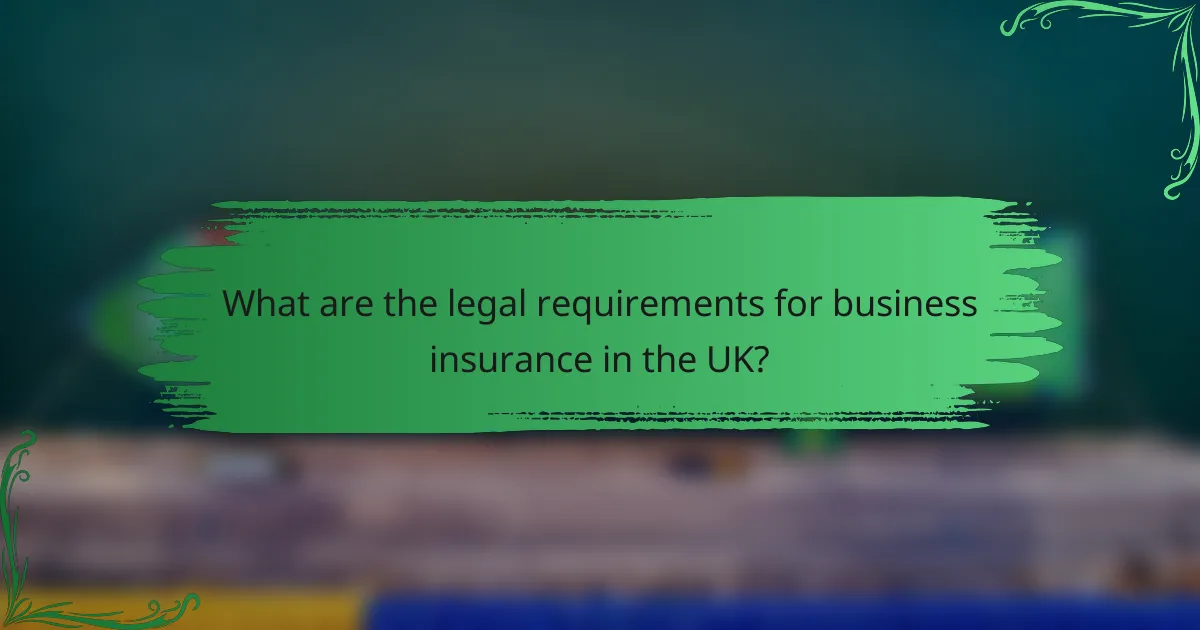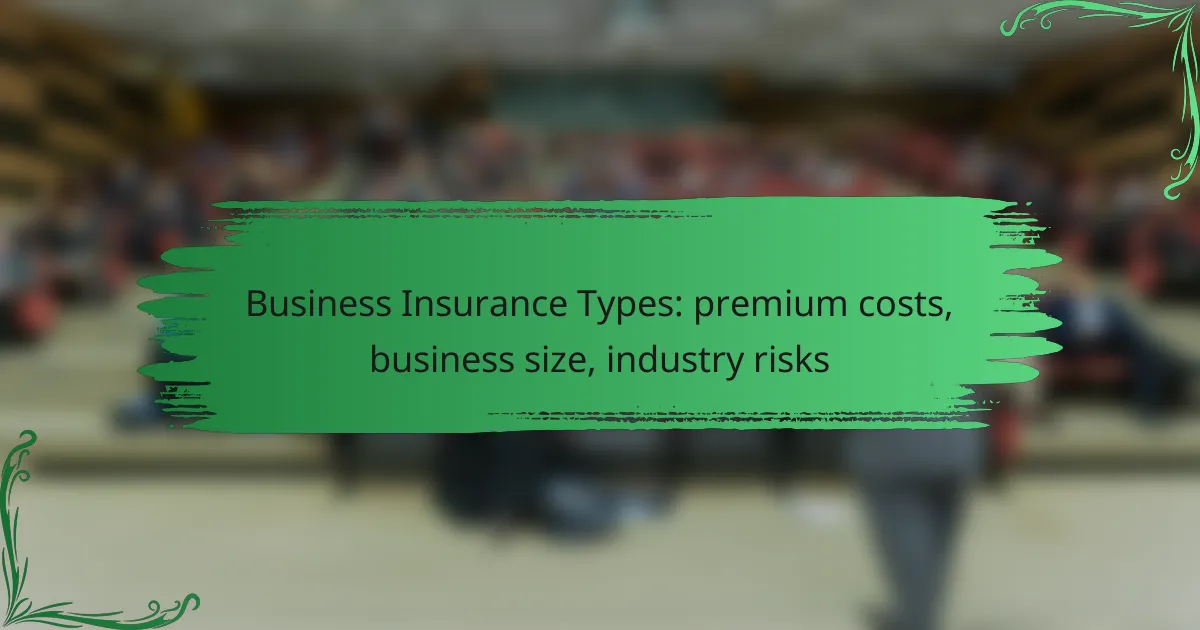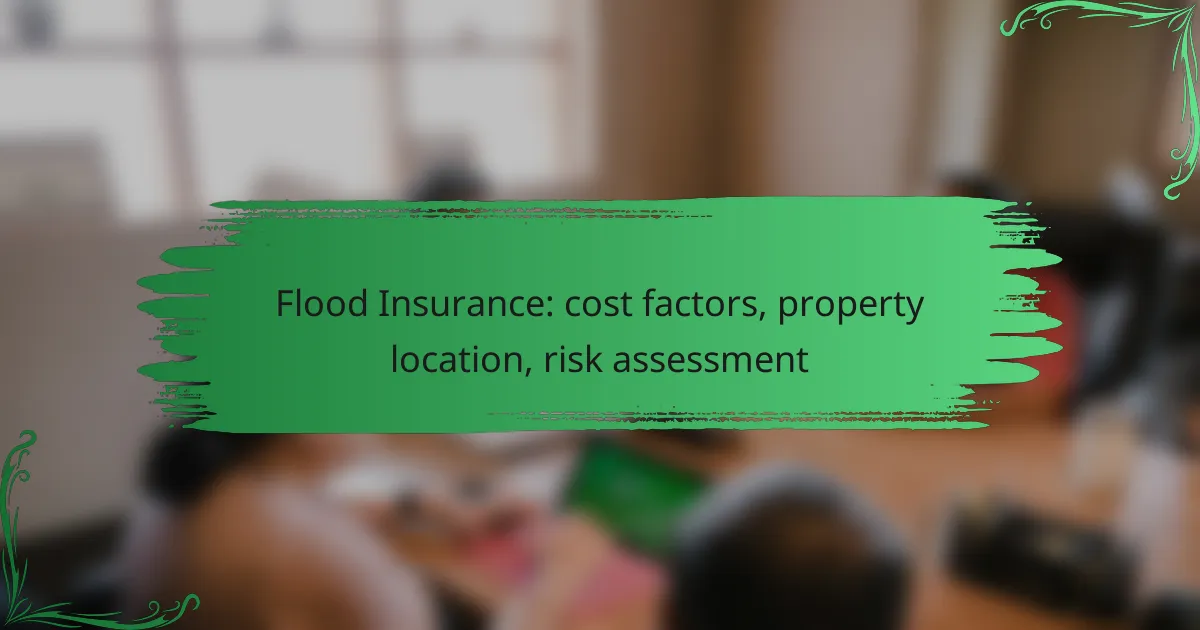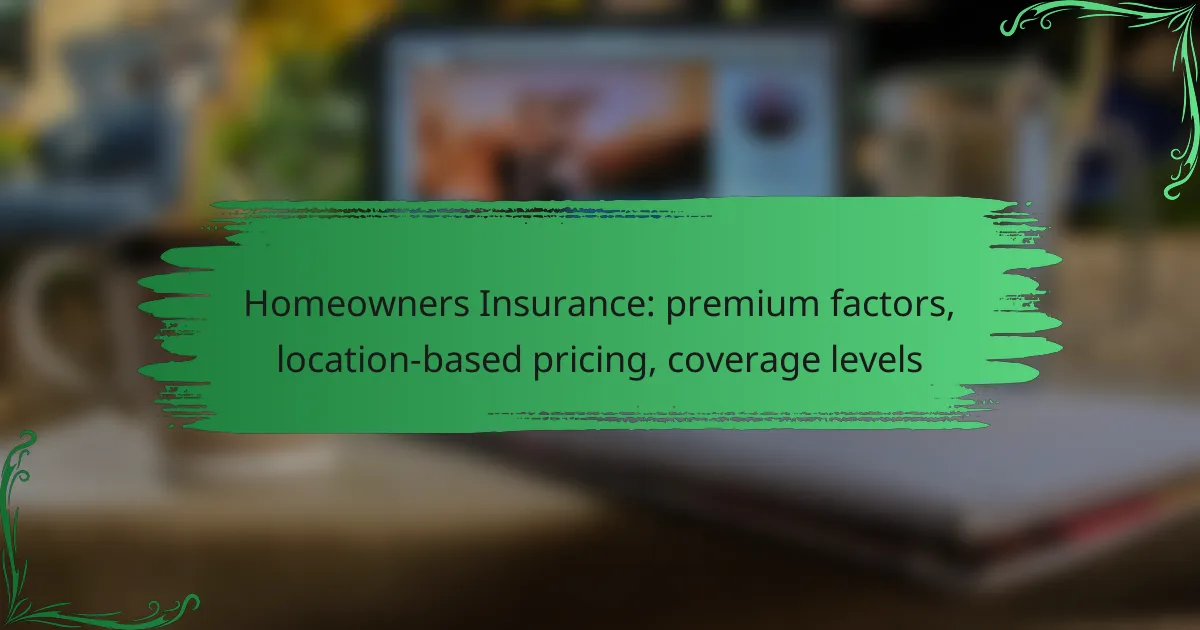Business insurance is essential for protecting assets and ensuring continuity in the face of various risks. In the UK, the main types include general liability, professional indemnity, and commercial property insurance, each tailored to address specific industry challenges. The costs of these policies can vary significantly based on factors such as business size and the unique risks associated with different industries.

What are the main types of business insurance in the UK?
The main types of business insurance in the UK include general liability, professional indemnity, employers’ liability, commercial property, and business interruption insurance. Each type addresses specific risks and liabilities that businesses face, helping to protect assets and ensure continuity.
General liability insurance
General liability insurance protects businesses from claims related to bodily injury, property damage, and personal injury. This coverage is essential for any business that interacts with clients or the public, as it can cover legal fees and settlements.
Premium costs for general liability insurance can vary based on factors such as business size, industry, and claims history. Small businesses might pay a few hundred to a few thousand pounds annually, while larger firms may face higher premiums.
Professional indemnity insurance
Professional indemnity insurance is crucial for businesses that provide professional services or advice. It covers legal costs and claims for negligence, errors, or omissions that may arise from your professional activities.
In the UK, many professions, such as solicitors and accountants, are required to have this insurance. Premiums typically depend on the level of coverage needed and the nature of the services provided, often ranging from several hundred to several thousand pounds annually.
Employers’ liability insurance
Employers’ liability insurance is mandatory for most businesses in the UK that employ staff. It covers claims made by employees for work-related injuries or illnesses, protecting businesses from potentially significant compensation costs.
The minimum coverage required is £5 million, but many insurers offer higher limits. Premiums can vary widely based on the number of employees, the industry, and the business’s claims history, typically ranging from a few hundred to several thousand pounds per year.
Commercial property insurance
Commercial property insurance protects physical assets such as buildings, equipment, and inventory against risks like fire, theft, and natural disasters. This insurance is vital for businesses that own or lease physical spaces.
Premium costs depend on the property’s location, value, and the level of coverage selected. Businesses should assess their specific risks to determine appropriate coverage levels, which can range from hundreds to thousands of pounds annually.
Business interruption insurance
Business interruption insurance covers loss of income due to disruptions, such as natural disasters or other unforeseen events that halt operations. This insurance helps businesses recover lost revenue and cover ongoing expenses during the downtime.
Premiums for business interruption insurance depend on factors like the business’s revenue and the length of coverage desired. It’s crucial for businesses to evaluate their potential risks and choose coverage that aligns with their operational needs, often costing a few hundred to several thousand pounds per year.

How much does business insurance cost in the UK?
Business insurance costs in the UK vary widely based on factors like business size, industry, and specific risks involved. Generally, small businesses can expect to pay anywhere from a few hundred to several thousand pounds annually for adequate coverage.
Average premium costs by business size
Premium costs for business insurance typically scale with the size of the business. Small businesses might pay between £300 and £1,500 per year, while medium-sized businesses could see premiums ranging from £1,500 to £5,000. Larger enterprises often face costs exceeding £5,000, depending on their specific needs and risks.
For example, a freelance graphic designer may pay around £200 to £600 annually, while a medium-sized construction firm could incur costs of £2,000 to £4,000. Understanding your business size helps in estimating insurance needs accurately.
Factors affecting insurance premiums
Several factors influence business insurance premiums, including the type of coverage required, the nature of the business, and the claims history. Businesses in high-risk industries, such as construction or manufacturing, often face higher premiums due to increased likelihood of claims.
Other considerations include the location of the business, the number of employees, and the overall revenue. For instance, a business located in an area with high crime rates may pay more for property insurance compared to one in a safer neighborhood.
Cost comparisons by industry
Insurance costs can vary significantly by industry due to differing risk profiles. For example, retail businesses might pay between £500 and £2,000 annually, while professional services like consulting could range from £300 to £1,500. High-risk sectors, such as construction, often see premiums starting at £1,500 and going well above £5,000.
It’s essential to compare costs across industries to understand where your business stands. Engaging with an insurance broker can provide tailored insights and help you navigate the best options for your specific industry needs.

What risks do different industries face in the UK?
Different industries in the UK encounter unique risks that can significantly impact their operations and insurance needs. Understanding these risks is crucial for businesses to ensure they have appropriate coverage and can mitigate potential losses.
Construction industry risks
The construction industry faces risks such as workplace accidents, equipment damage, and project delays. These risks can lead to costly claims and increased insurance premiums. Companies should consider comprehensive coverage that includes public liability, employer’s liability, and contract works insurance.
Additionally, fluctuating material costs and regulatory changes can affect project budgets and timelines. Businesses should regularly assess their risk exposure and adjust their insurance policies accordingly to ensure adequate protection.
Retail industry risks
Retail businesses encounter risks including theft, property damage, and liability claims from customers. These risks can arise from various sources, such as shoplifting, accidents on the premises, or product defects. Retailers should invest in property insurance, liability coverage, and possibly business interruption insurance to safeguard against these threats.
Seasonal fluctuations in sales can also impact cash flow, making it essential for retailers to have a financial cushion and appropriate insurance to cover unexpected downturns. Regularly reviewing insurance policies can help ensure they align with changing business needs.
Healthcare industry risks
The healthcare sector faces unique risks such as malpractice claims, data breaches, and regulatory compliance issues. These risks can have severe financial implications, making it vital for healthcare providers to have robust professional indemnity insurance and cyber liability coverage.
Moreover, the increasing reliance on technology in healthcare raises the stakes for data security. Healthcare organizations should implement strong data protection measures and regularly update their insurance to cover evolving risks in the industry.

How to choose the right business insurance?
Choosing the right business insurance involves assessing your unique needs, comparing different providers, and understanding the specific terms of each policy. This process ensures that your business is adequately protected against potential risks while remaining financially viable.
Assessing business needs
Begin by evaluating the specific risks associated with your industry and business size. For example, a small retail shop may require different coverage than a large manufacturing facility due to varying liability and property risks.
Consider factors such as the number of employees, the nature of your products or services, and any regulatory requirements that may apply. This assessment will help you identify the types of coverage necessary, such as general liability, property insurance, or workers’ compensation.
Comparing insurance providers
When comparing insurance providers, look for companies with strong reputations and financial stability. Check customer reviews and ratings to gauge their service quality and claims handling.
Request quotes from multiple insurers to compare premium costs and coverage options. Be mindful of the deductibles and limits associated with each policy, as these can significantly affect your overall expenses and protection level.
Understanding policy terms
Thoroughly review the terms and conditions of each policy before making a decision. Pay attention to exclusions, coverage limits, and any additional endorsements that may enhance your protection.
It’s crucial to understand the claims process and any requirements for filing a claim. Clarifying these details upfront can prevent misunderstandings and ensure that you receive the support you need when it matters most.

What are the legal requirements for business insurance in the UK?
In the UK, businesses are legally required to have certain types of insurance to protect against various risks. The most notable requirement is Employers’ Liability Insurance, which covers employee injuries or illnesses related to their work.
Mandatory insurances for businesses
Businesses in the UK must have Employers’ Liability Insurance if they employ staff. This insurance typically covers claims up to £5 million, ensuring that employees are compensated for work-related injuries or illnesses. Additionally, depending on the nature of the business, other types of insurance may be required, such as Public Liability Insurance for businesses that interact with the public.
For specific industries, such as construction or healthcare, there may be additional mandatory insurances. For example, construction firms often need Contractors’ All Risks Insurance to cover property damage and liability during projects.
Compliance with UK regulations
Compliance with UK regulations regarding business insurance is crucial to avoid penalties and legal issues. The Health and Safety Executive (HSE) oversees Employers’ Liability Insurance requirements, ensuring that businesses meet their obligations. Failure to comply can result in fines and legal action.
To ensure compliance, businesses should regularly review their insurance policies and stay updated on any changes in legislation. Consulting with an insurance broker can help identify necessary coverage and ensure that all legal requirements are met effectively.

What are the benefits of having business insurance?
Business insurance provides essential protection against various risks that can financially impact a company. It safeguards assets, ensures business continuity, and can enhance credibility with clients and partners.
Financial protection
Financial protection is one of the primary benefits of business insurance. It helps cover unexpected costs arising from incidents such as property damage, liability claims, or employee injuries. This coverage can prevent significant financial losses that could jeopardize the business’s survival.
When selecting insurance, consider the specific risks associated with your industry and business size. For example, a small retail shop may need different coverage compared to a construction company, which faces higher liability risks. Understanding these nuances can help tailor your insurance to provide adequate financial protection.
To optimize financial protection, regularly review your policy to ensure it aligns with your current business operations and risks. Avoid common pitfalls like underinsuring your assets or overlooking critical coverage areas, as these can lead to substantial out-of-pocket expenses during a claim.



